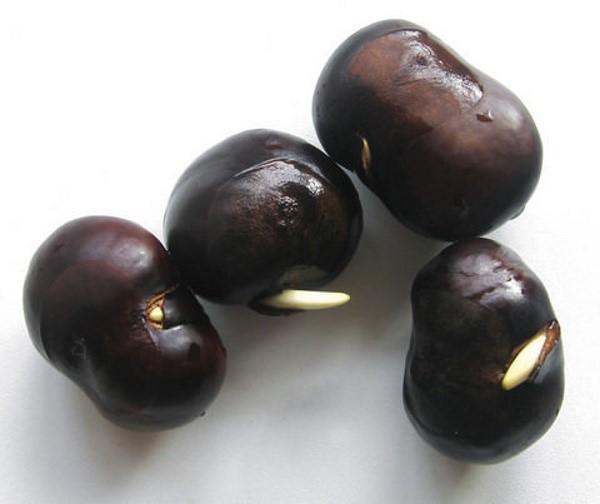How to germinate a chestnut - we grow an ornamental culture ourselves
 Seedlings of ornamental crops, such as chestnuts, are no cheaper to purchase from nurseries than nuts or apple trees. However, knowing how to germinate a chestnut, it is quite possible to grow it yourself. Why not? Chestnuts can be found not only in city parks - for the sake of a beneficial shade, they are increasingly planted in summer cottages. If the size of the site allows, plant this beautiful tree too. And we will help you save money on buying a seedling by telling you how to get it from the fruit.
Seedlings of ornamental crops, such as chestnuts, are no cheaper to purchase from nurseries than nuts or apple trees. However, knowing how to germinate a chestnut, it is quite possible to grow it yourself. Why not? Chestnuts can be found not only in city parks - for the sake of a beneficial shade, they are increasingly planted in summer cottages. If the size of the site allows, plant this beautiful tree too. And we will help you save money on buying a seedling by telling you how to get it from the fruit.
How to germinate a chestnut?
If you have ever held chestnuts in your hands, you must remember that its nuts are very hard, with a dense skin. It is quite natural that when planting such a fruit, the sprouts will need to wait a long time.
To speed up this process, the chestnuts must be pretreated, namely:
- First of all, place the nuts in a cool place for a couple of weeks, ideally on the bottom shelf in the refrigerator. Low temperature exposure will simulate natural stratification conditions. In nature, chestnuts fall off in autumn and lie on the ground under the leaves all winter. The strongest and healthiest sprout in spring.
- Then soak the nuts in water, also for 10 days. A growth stimulant can be added to the water. Change the water periodically, otherwise it will stagnate and smell bad. As a result of soaking, the shell will swell and soften, and it will be easier for the sprout to break through.
Do not delay germinating and planting chestnuts until spring. During the winter, the nuts will dry out, so it is better to start the procedure in the fall, immediately after collecting the fallen chestnuts. You cannot pick fruits from the branches - they may still be green.
If there is no way to plant chestnuts in the fall, then put them in a box of sand and send them to the cellar. In the spring we will have to sort out stocks, but in principle, most of them should remain viable. How to germinate chestnuts in spring? In the same way, but start germination in early March, skipping the first step of the procedure.
Planting a sprouted chestnut
When you see white sprouts on the nuts, it's time to plant them. To do this, take large plastic (beer) glasses and fill them with loose nutrient soil. Take a separate container for each chestnut - the roots of the plant are very strong. In a common pot, even two seedlings will be cramped, and when diving there is a risk of damaging the young roots.
Make a well and place the sprouted chestnut in there. When doing this, keep an eye on the planting depth. It should be a maximum of 5 cm and a minimum of 3 cm. If you dig deeper, the sprout will not break through to the surface at all. A shallower planting will cause it to dry out.
Place the planted chestnuts on the lightest windowsill and water regularly. And at the end of spring they can be planted in the garden. But keep in mind: if you have fruit edible chestnuts, for the winter, the seedlings will need to be covered. Horse chestnut does not need shelter.